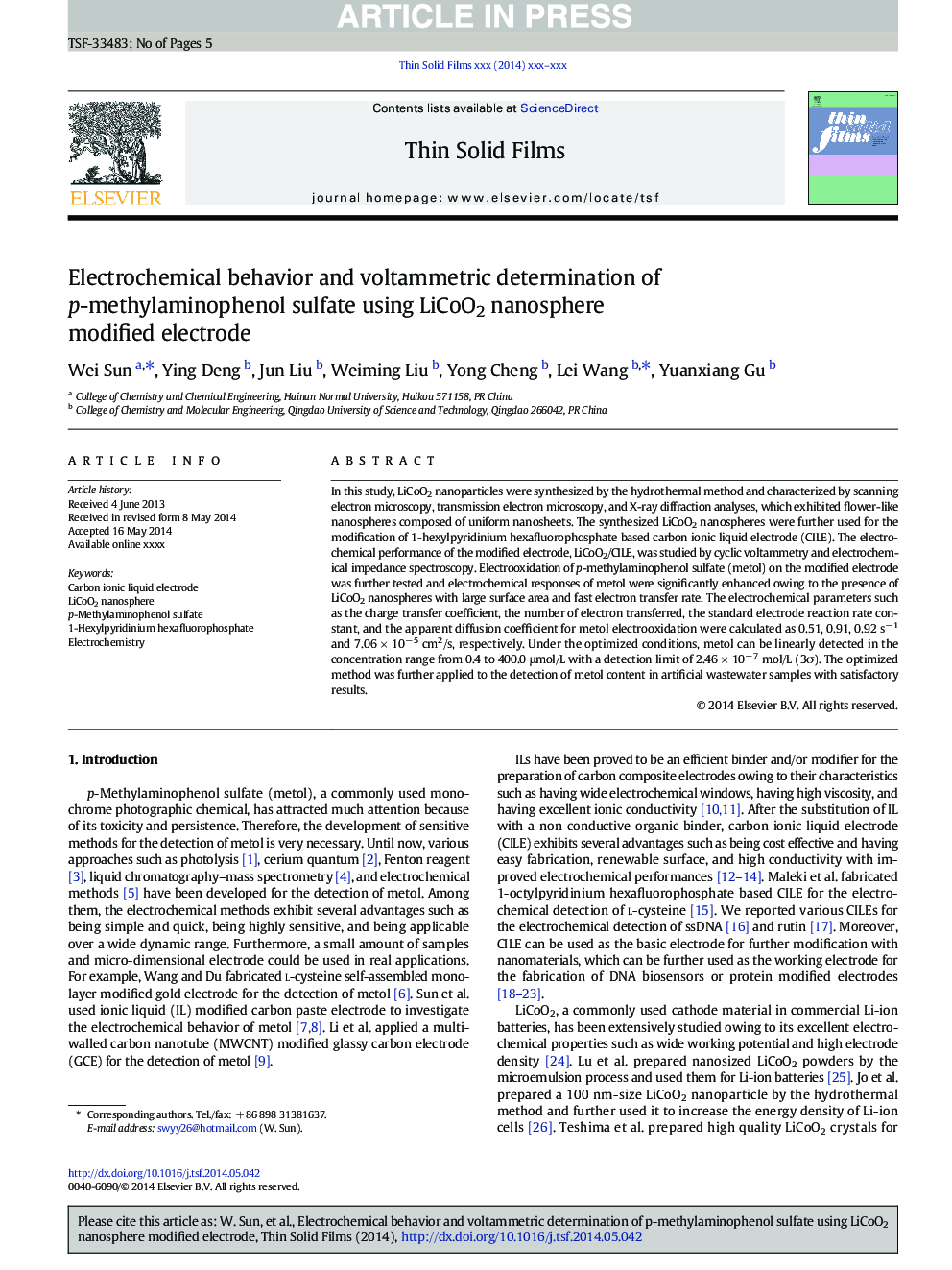| Article ID | Journal | Published Year | Pages | File Type |
|---|---|---|---|---|
| 8034993 | Thin Solid Films | 2014 | 5 Pages |
Abstract
In this study, LiCoO2 nanoparticles were synthesized by the hydrothermal method and characterized by scanning electron microscopy, transmission electron microscopy, and X-ray diffraction analyses, which exhibited flower-like nanospheres composed of uniform nanosheets. The synthesized LiCoO2 nanospheres were further used for the modification of 1-hexylpyridinium hexafluorophosphate based carbon ionic liquid electrode (CILE). The electrochemical performance of the modified electrode, LiCoO2/CILE, was studied by cyclic voltammetry and electrochemical impedance spectroscopy. Electrooxidation of p-methylaminophenol sulfate (metol) on the modified electrode was further tested and electrochemical responses of metol were significantly enhanced owing to the presence of LiCoO2 nanospheres with large surface area and fast electron transfer rate. The electrochemical parameters such as the charge transfer coefficient, the number of electron transferred, the standard electrode reaction rate constant, and the apparent diffusion coefficient for metol electrooxidation were calculated as 0.51, 0.91, 0.92 sâ 1 and 7.06 Ã 10â 5 cm2/s, respectively. Under the optimized conditions, metol can be linearly detected in the concentration range from 0.4 to 400.0 μmol/L with a detection limit of 2.46 Ã 10â 7 mol/L (3Ï). The optimized method was further applied to the detection of metol content in artificial wastewater samples with satisfactory results.
Related Topics
Physical Sciences and Engineering
Materials Science
Nanotechnology
Authors
Wei Sun, Ying Deng, Jun Liu, Weiming Liu, Yong Cheng, Lei Wang, Yuanxiang Gu,
